On Unixlike systems, chmod is a systemlevel command that stands for "change mode" and allows you to manually change the permission settings of a file Not to be confused with chown, which is another systemlevel command on Unixlike systems that stands for "change owner" and lets you assign ownership of a file to another user, or chgrp, which stands for "change group" andChmod Linux Commands What is Linux chmod Command?Chmod never changes the permissions of symbolic links;
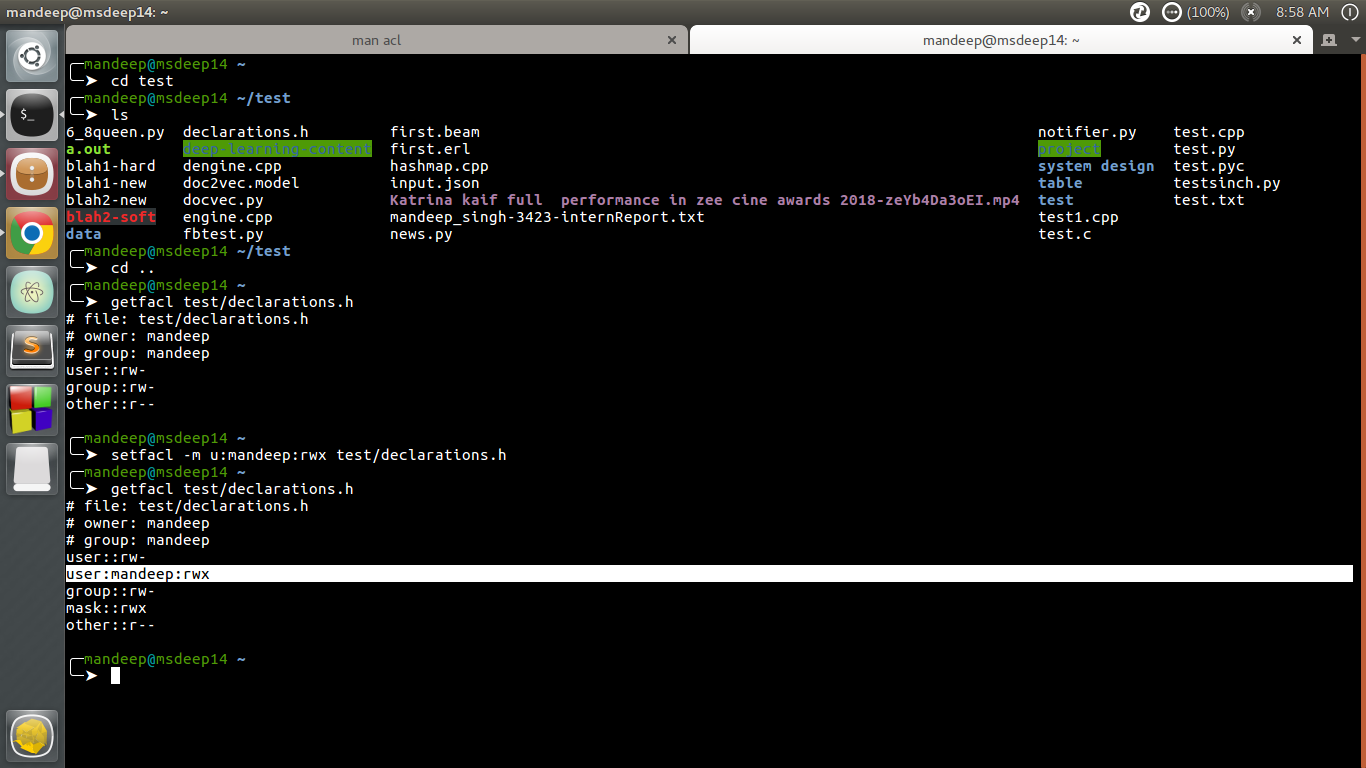
Access Control Lists Acl In Linux Geeksforgeeks
Chmod linux install
Chmod linux install-The chmod system call cannot change their permissions This is not a problem since the permissions of symbolic links are never used However, for each symbolic link listed on the command line, chmod changes the permissions of the pointedto fileChmod R 755 will set this as permissions to all files and folders in the tree You can use the find command For example To change all the directories to 755 (drwxrxrx)



Linux Terminal File Permissions Chmod Chown And Chgrp Linux Line Tools Thing 1
The chmod() function shall change S_ISUID, S_ISGID, S_ISVTX, and the file permission bits of the file named by the pathname pointed to by the path argument to the corresponding bits in the mode argument The application shall ensure that the effective user ID of the process matches the owner of the file or the process has appropriate privileges in order to do thisView (u)ser, (g)roup and (o)thers permissions for chmod 644 (chmod arwx,ux,gwx,owx) or use free online chmod calculator to modify permissions easilyDownload Chmod Linux for free This is a modified Kubuntu iso that has the chmod shell scripts This is a 32 Bit Operating System called Chmod Linux Works as a Live DVD and Boots From The RAM Disk
7 /dev/md127 refuses to stop No open files 4 Failure to startx on Ubuntu 1404 after security update missing libXfontso1 1 chmod What does this command do?If you are new to Linux, and are looking for a way to change file/directory permissions through the command line, you'll be glad to know there exists a command dubbed chmod that lets you easily do this In this tutorial, we will discuss the basics of this command as well as provide examples explaining how it can be used in various scenarios9 When does chmod fail?
In the current iteration of my script, I'm finding files twice find /var/www/mysite exec chown wwwdatawwwdata {} \;Linux chmod command Updated 05/04/19 by Computer Hope In Unixlike operating systems, the chmod command sets the permissions of files or directories This document describes the GNU / Linux version of chmodFind /var/www/mysite type f exec chmod 775 {} \;



Linux Commands Linuxconfig Org
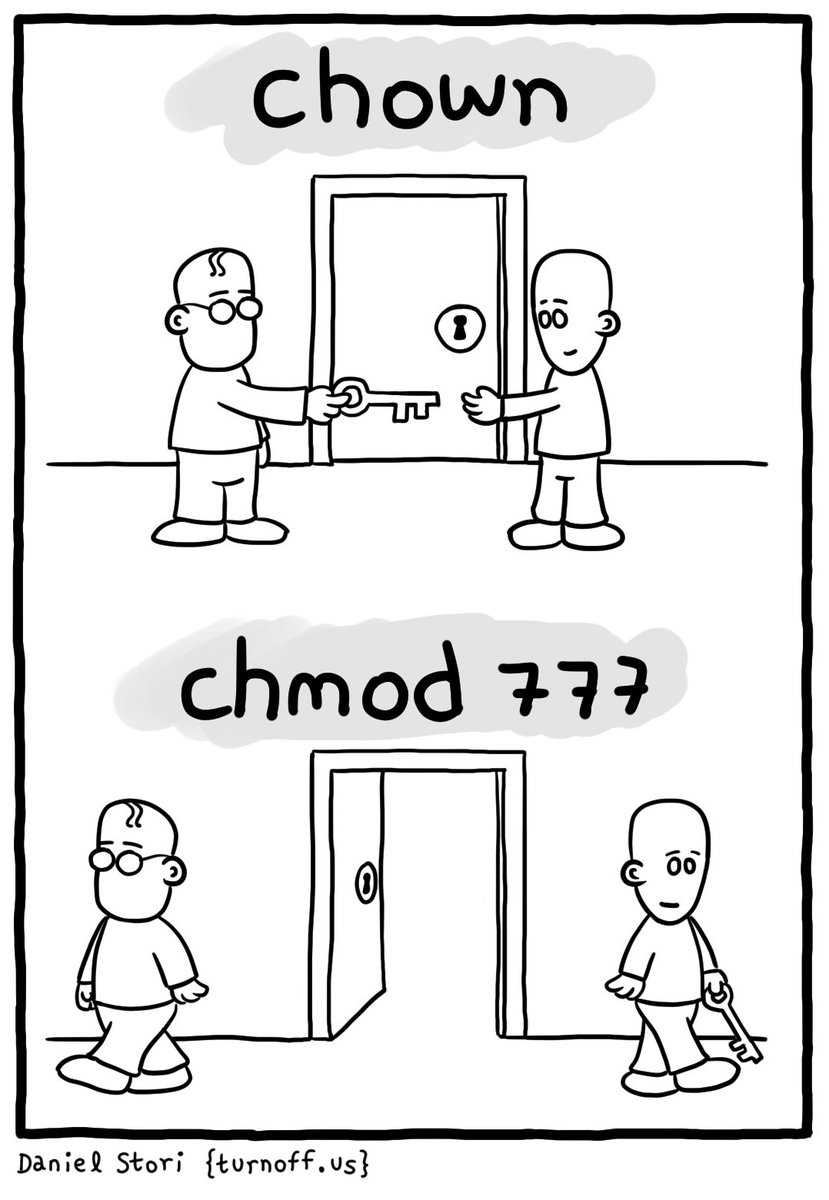


Turnoff Us Chown Chmod Linux Comic Sysadmin T Co It6rlqlahr
In Linux, the chmod 644 command works for both files and directories You can set the chmod 644 commands in any Linux filesystem, server, or media player server like Plex or Emby Here is an example of how you can run the chmod 644 commands on a Linux system sudo chmod 644 /path/to/file 8 chmod 600 Allow ReadWrite, But No ExecutionChmod is a very helpful command to change the file permissions of a file or a folder in any UNIXlike operating system Let's say you are currently in the root directory of your Unixlike system and you want to change the file permissions of a folder and all of the other files and subdirectories present inside that folderChmod is a program responsible for modifying access permissions of file and directories in Unix/Linux While the concept is easy to understand, the syntax might overwhelm new users a little bit Most of the time, you will encounter chmod 777, chmod 755 and chmod 644 In this article, we will explain the meaning of these numbers and how they are related to the actual permissions



How To Use The Chmod Command In Linux The Wise Bulb



Chmod Antlersea Flickr
7 /dev/md127 refuses to stop No open files 4 Failure to startx on Ubuntu 1404 after security update missing libXfontso1 1 chmod What does this command do?The chmod command A normal consequence of applying strict file permissions, and sometimes a nuisance, is that access rights will need to be changed for all kinds of reasons We use the chmod command to do this, and eventually to chmod has become an almost acceptable English verb, meaning the changing of the access mode of a fileUnix systems (including Linux and macOS) have a file control mechanism that determines who can access a particular file or folder and what they can do with that file or folder There are two parts to the file control mechanism "Classes" and "Permissions"


Give Write Access Chmod 775
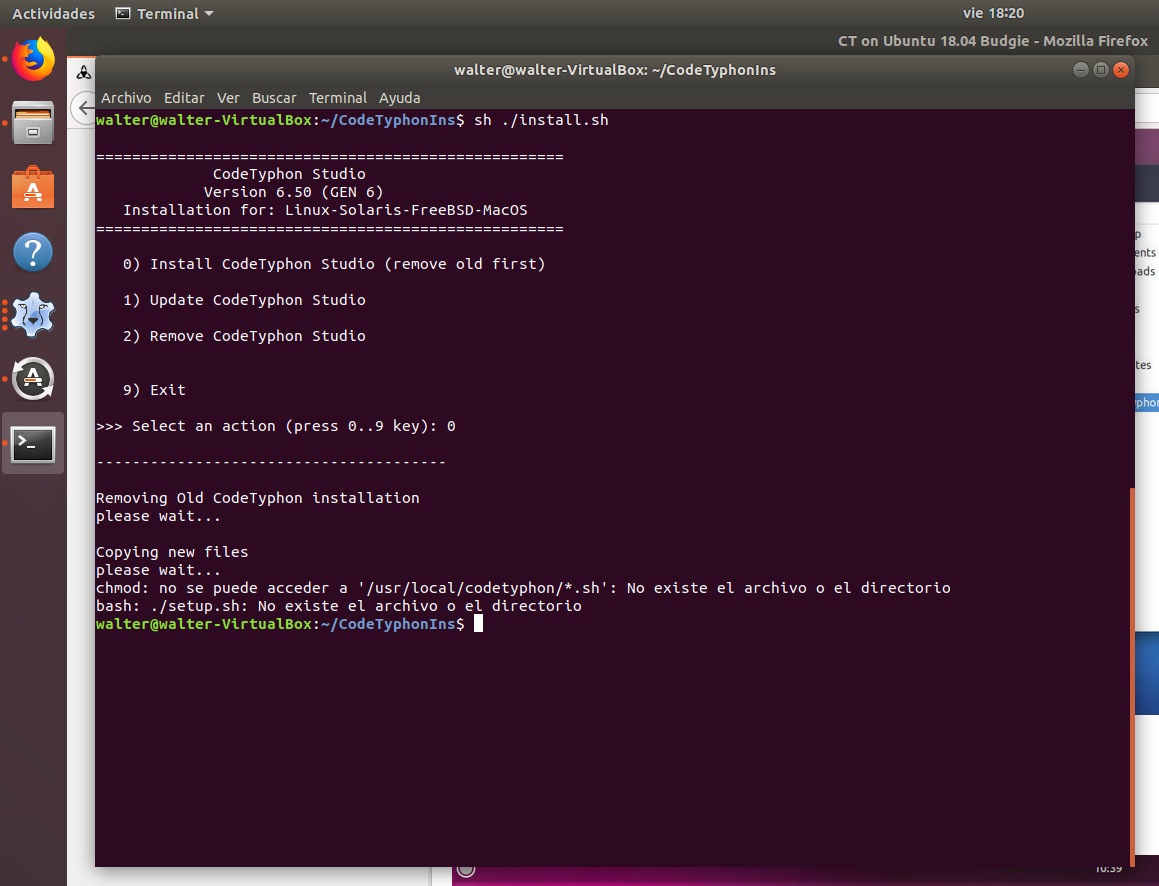


Can T Install Ct On Ubuntu 18 04 Index
How to use the chmod command in Linux First, open terminal Then use the cd command to go to the directory where the file you want edit is Now use the following command to see the permission granted to the file Ls –l filename Now you just need to use the attributes explained above Use the following example to execute the chmod command inChmod Linux Commands What is Linux chmod Command?Sooner or later in the Linux world, you will have to change the permission on a file or directory This is done with the chmod command In this article, I'll share with you some of the practical examples of chmod command I'll also explain some the popular terms like chmod 777 or chmod 755 or chmod r
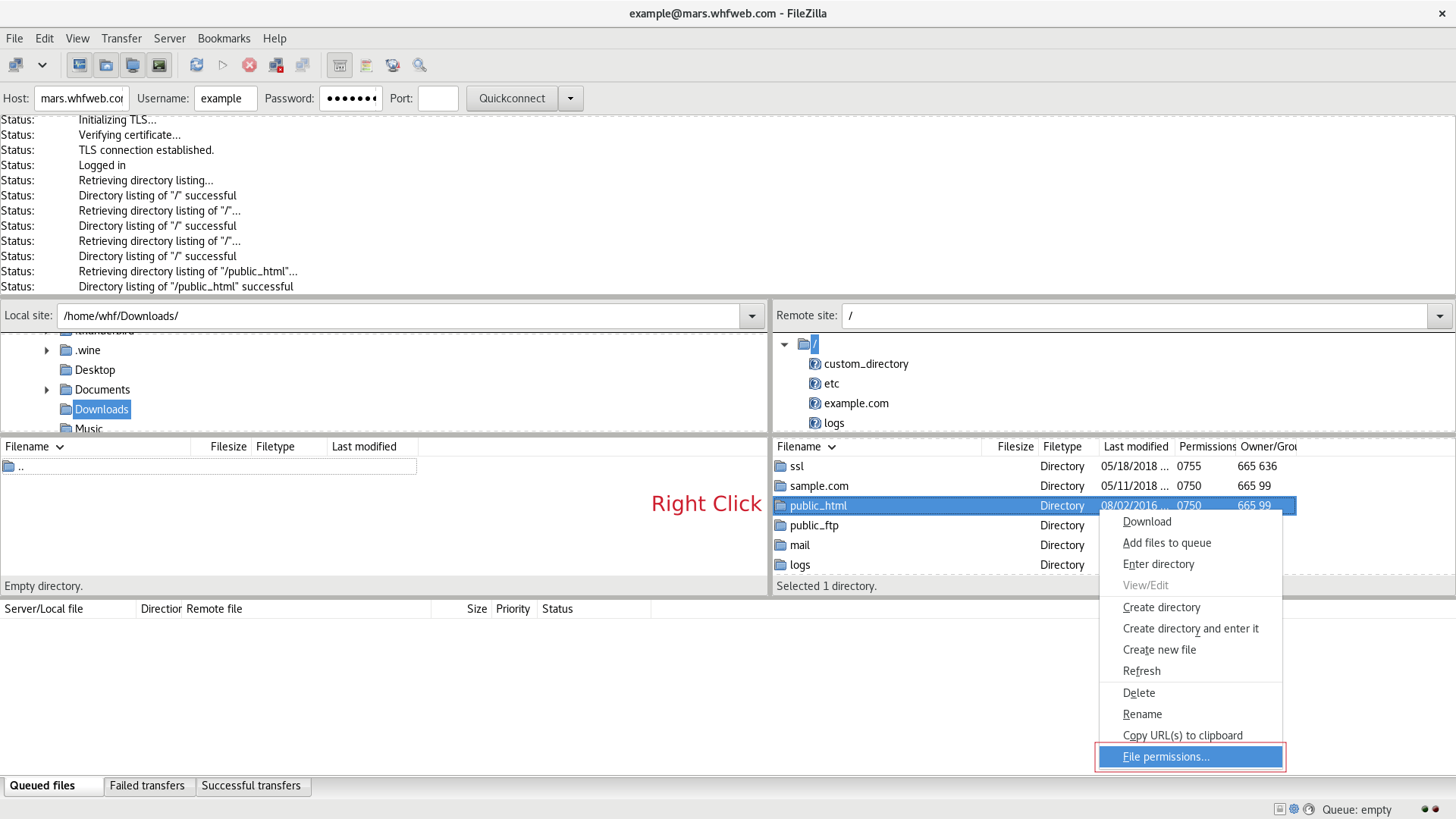


Change Permissions Of Files And Folders In Filezilla In Your Linux Hosting



Change File Permissions Easily With Online Chmod Calculator By Chmodcalcu Issuu
In Unixlike operating systems, the chmod command is used to change the access mode of a file The name is an abbreviation of change modeLinux is a multiuser system and access to the files is controlled through the file permissions, attributes, and ownership In this article we'll explain how to recursively change permissions of files and directories$ chmod ux hello_scriptsh Step 5 Running Executable Script At the end of this tutorial, you should be familiar with how to set a script executable in Linux I hope you enjoyed reading, please leave your suggestion in the below command section Categories Linux Commands, Shell Scripts



Linux Commands 5 File Permission Chmod Youtube
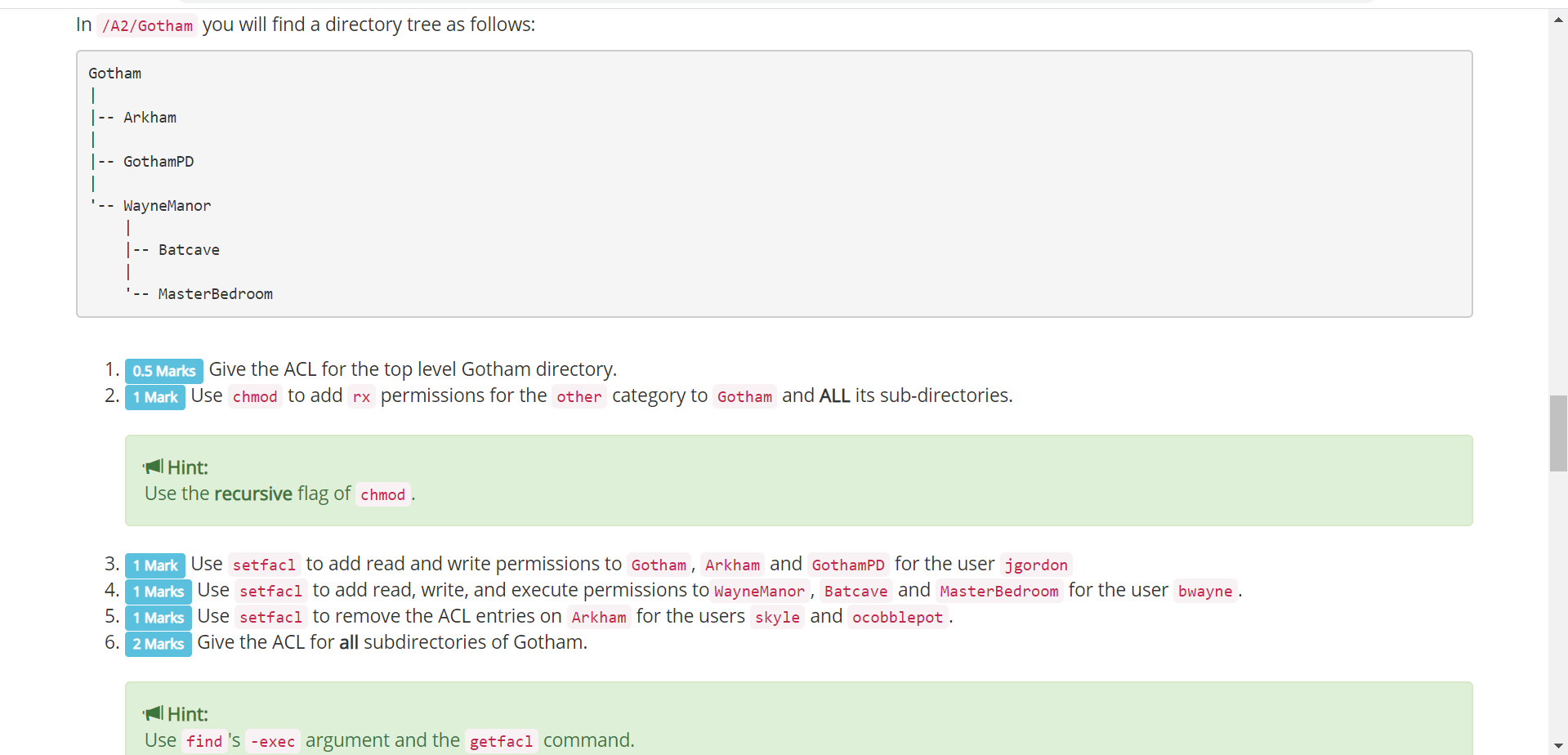


Solved Please Provide Commands For These Steps To Be Done Chegg Com



0 件のコメント:
コメントを投稿